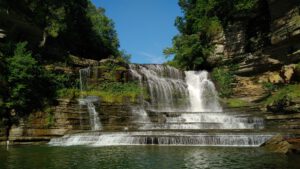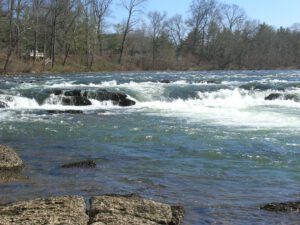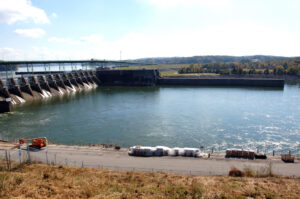There is no imminent water crisis in Tennessee, but the state has decided that now is the time to plan for the future and evaluate the water needs of its growing population. Municipal Water Leader’s senior writer, John Crotty, spoke with Dr. Shari Meghreblian, deputy commissioner of the Tennessee Department of Environment and Conservation, and Elaine Boyd, senior advisor for department’s Bureau of Environment, about the development of the TN H2 0 plan and the goals for the initiative.
John Crotty: Where did the drive for the water plan come from?
Shari Meghreblian: Ever since Governor Haslam took office, he has been focused on improving and making state government better for the citizens of Tennessee. Knowing that he is in his last year in office, he did not want to let off the gas; he challenged our agency to implement, enact, or start a project that would help move the state forward in a positive way. As an agency, we chose to focus on a comprehensive study of water availability that ranges from the water source to delivery systems and end users, and what we can do to ensure that our water remains as it is today for generations to come.
All else being constant, the population in our state is expected to roughly double in the next 50 years. Effective water planning will be an essential component for managing this anticipated growth. There are other water availability issues at the forefront as well, such as questions surrounding the use of the Memphis Sand Aquifer. Knowing how many taps we have into the aquifer—and how much is being taken out—is imperative. In addition, aging drinking water and wastewater infrastructure and interstate battles over water rights stress the need for this plan.

One of the [steering] committee members is the president of the Tennessee Municipal League, which represents about 300 cities and municipalities. The league president indicated that if the league were to poll every one of its municipalities today, water availability probably would be one of their top three issues.
John Crotty: Has the state done anything like this before? Elaine Boyd: In the past, we have conducted regional water resources assessments. It was a pilot that began after we experienced a drought in 2007–2008. Based on the outcome of the pilot, we came up with guidelines for regional water resources planning. TN H2 O is more of a proactive effort, and it is statewide in scope, which I believe is a first for the state.
John Crotty: How is this being perceived by the public and those participating in the working groups and steering committees?
Elaine Boyd: The people involved are excited because they are affected bywater resources or have been working on similar efforts on their own. They are happy to be involved in this statewide effort. You have the Tennessee Municipal League, Tennessee American Water, the Tennessee Valley Authority, the agricultural community, environmental advocacy organizations, and the list goes on and on. It is truly a group effort, which is what the governor intended.
Shari Meghreblian: For this to really work for future administrations, the best way to put forth a plan is to have public buy-in. There is a lot of information available that the public has not had an opportunity to review or have input on, so we hope this brings some of that to light.
We have not had any negative feedback up to this point. However, we are not at the point in the process where proposed recommendations are being made. I’m sure when we open the plan for public comment, there will be feedback—both positive and negative—which we are looking forward to gathering. Public input will be another critical component of this plan.

John Crotty: How were the working groups constructed?
Shari Meghreblian: There is kind of a two-level effort going on here. There is the steering committee, which oversees the whole program at a high level. People such as Jim Strickland, the mayor of Memphis, and William D. Johnson, chief executive officer of the Tennessee Valley Authority, make up this committee. They were chosen to provide input into the high-level goals and needs for the plan.
The six working groups, on the other hand, are more specific. They focus on groundwater, surface water, technical data collection, infrastructure, legal and institutional framework, and our natural resources. We have a chair and co-chair leading each group, and they were responsible for coming up with a list of people to serve on the committee. The only thing we told them to do was to select a group of diverse individuals to offer a variety of opinions on the issues. They can create subcommittees to handle certain issues if they see fit.
Shari Meghreblian: There are many light bulbs going on in these groups as they discover all the data held by various organizations involved with the project. Folks are really excited about the amount of information that is available but was not previously shared.
Additionally, one of the other benefits to these working groups is that individuals are being exposed to different perspectives on water and how it serves our needs. Farmers are working next to regulators, environmental groups are working next to farmers, and so on. It is really great to see the collaboration taking place.

John Crotty: What do you, as an agency, hope to get out of this?
Shari Meghreblian: As an agency, we are really here to implement the water quality aspect of the Clean Water Act. But with this effort, we are not only looking at the quality, but at the quantity as well. Tennessee’s recent economic growth and the reason it is a great place to live, work, and raise a family, is due in part to industries such as agriculture, manufacturing, tourism, and energy, all of which use our water resources. We need a plan for managing those resources that considers a broad array of perspectives, so that future generations can continue to thrive in our state.
TN H2 O is expected to have initial research and a state water plan submitted to Governor Haslam in October 2018. At that point, the public is encouraged to review the plan and submit comments to the Tennessee Department of Environment and Conservation. For more information on the plan, steering committee, working groups, or recent news, visit www.tn.gov.


